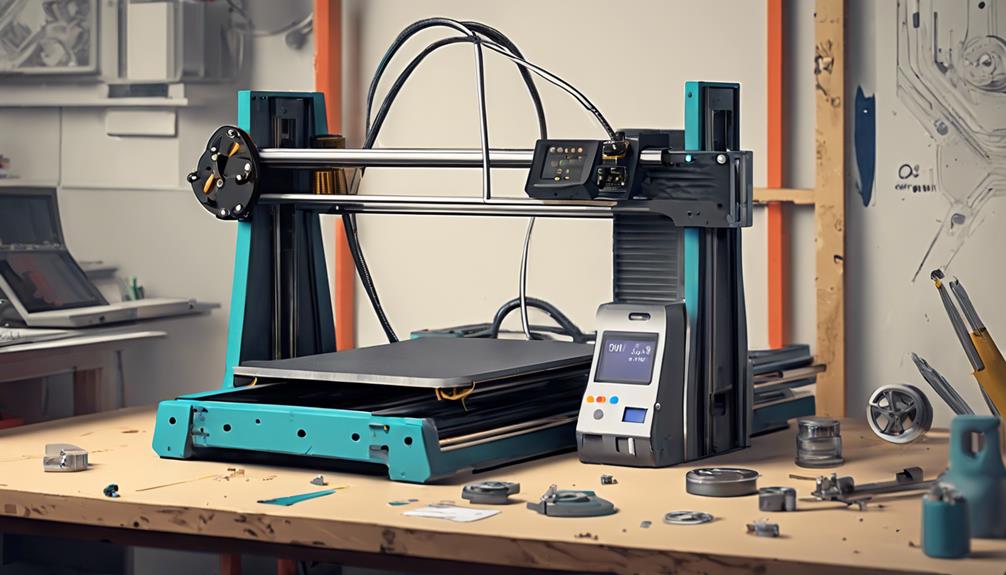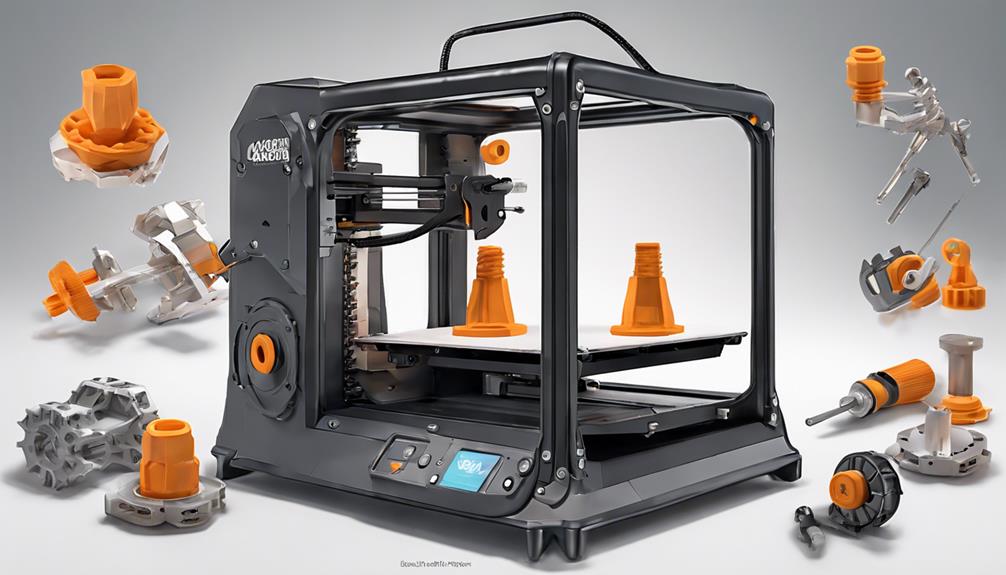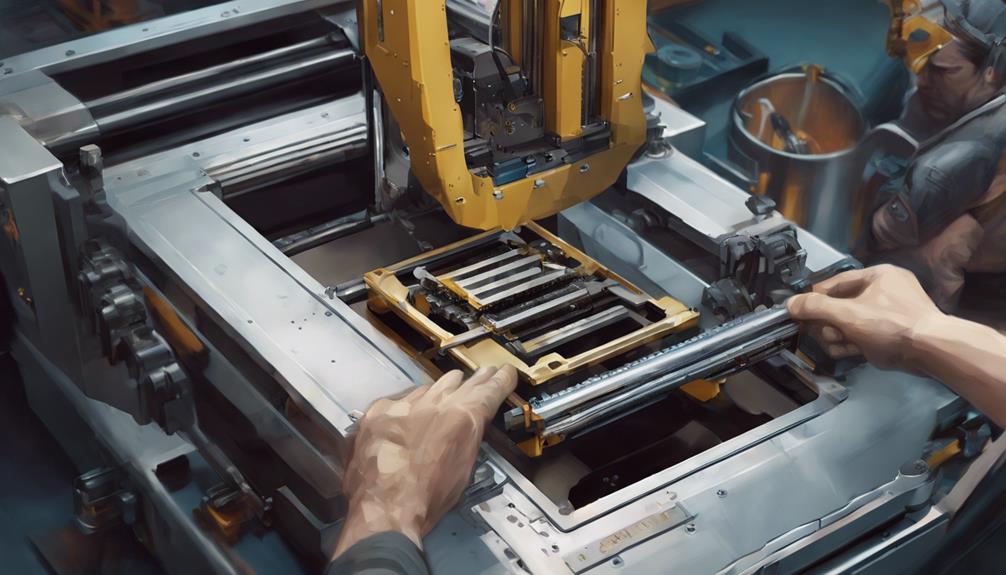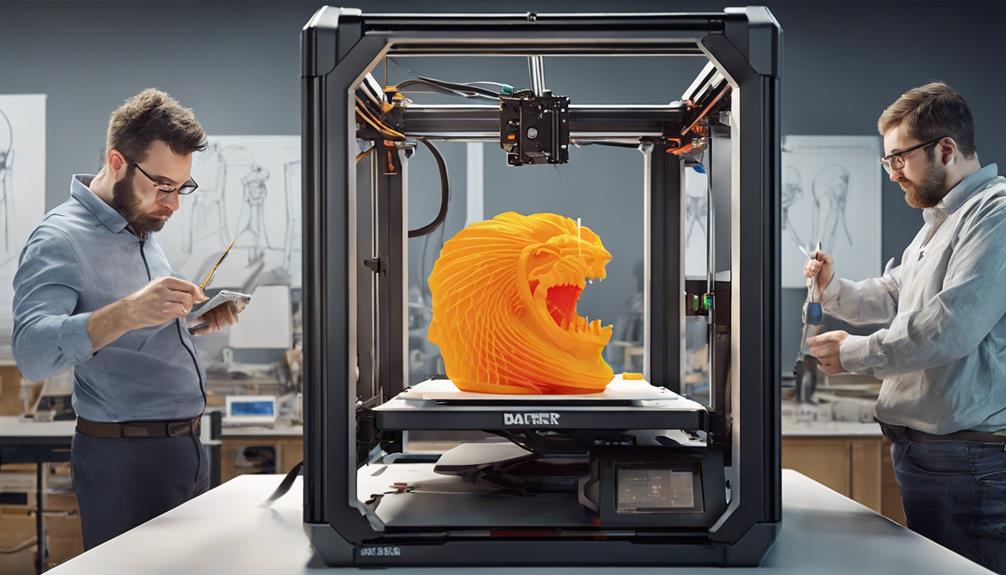As someone deeply involved in the world of 3D printing, I've come to appreciate the intricate dance of precision and maintenance that defines a well-tuned X Axis. The nuances of alignment, tension, and assembly intricacies can truly make or break the quality of your prints. But what exactly are the subtle adjustments and practices that experts swear by to enhance their X Axis performance? Let's explore these tips that could potentially enhance your printing game and reveal a world of pristine, flawless creations waiting to be materialized.
Common X Axis Issues

When addressing common X Axis issues in 3D printing, one must first identify the underlying causes to effectively troubleshoot and resolve any potential printing discrepancies.
One prevalent issue is X Axis sagging, which can lead to misaligned layers and poor print quality. Sagging often occurs due to improper alignment of the Z Axis and roller assemblies, causing pressure on the rollers and misalignment with the power supply. To rectify this, adjusting the alignment by loosening screws, aligning properly, and retightening is vital.
Additionally, focusing on eccentric nuts and Y Axis misalignment can greatly impact the X Axis's performance. Regular maintenance and adjustments play a key role in preventing X Axis sagging and ensuring the smooth movement of the X Gantry for high-quality prints.
Importance of Axis Alignment
Proper alignment of the printer's axes is essential for ensuring accurate and consistent 3D prints. When the axes are correctly aligned, it helps in preventing print defects and ensures that the final product matches the intended design.
Here are three key reasons why axis alignment is important:
- Precision: Aligned axes ensure that the printer moves accurately along the X, Y, and Z directions, resulting in precise prints.
- Consistency: Proper alignment maintains uniformity in layer deposition, reducing the chances of print inconsistencies.
- Durability: A well-aligned printer puts less stress on components, increasing their longevity and the overall reliability of the machine.
Maintaining axis alignment is fundamental for achieving high-quality 3D prints consistently.
Eccentric Nut Adjustment Techniques

I find adjusting eccentric nuts crucial for fine-tuning the roller assembly tightness on the X Axis in 3D printing. Proper adjustment guarantees smooth movement and prevents issues like X Axis sagging. Here is a helpful table detailing some techniques for adjusting eccentric nuts effectively:
| Eccentric Nut Adjustment Techniques | Steps |
|---|---|
| Loosen nuts | Loosen the eccentric nuts on both sides for free adjustment. |
| Fine-tune tightness | Adjust the nuts to achieve the desired snugness in the roller assembly. |
| Test X Gantry movement | After adjustments, test the X Gantry movement for smooth operation. |
| Repeat if necessary | If needed, repeat the process on both sides until the desired tightness is achieved. |
Roller Assembly Inspection and Adjustment
Inspecting and adjusting the roller assembly plays a critical role in maintaining the smooth operation of the X Axis in 3D printing. When examining the roller assembly, follow these essential steps:
- Check for Wear and Tear: Inspect the rollers for any signs of wear or damage that could affect the movement of the X Axis.
- Verify Proper Alignment: Make sure the roller assembly is aligned correctly with the X Axis to prevent any misalignment issues during printing.
- Adjust Roller Tension: Fine-tune the tension of the rollers using eccentric nuts to guarantee they grip the X Axis properly without causing too much friction.
X Axis Maintenance Best Practices

When maintaining the X Axis for peak performance, ensuring proper alignment and tension of the roller assembly is paramount. One key aspect of X Axis maintenance is regularly checking and adjusting the alignment and tension of the roller assembly to prevent issues like sagging and misalignment. Here is a table summarizing some best practices for X Axis maintenance:
| Maintenance Task | Description |
|---|---|
| Check Alignment | Confirm rollers are aligned with the axis. |
| Adjust Tension | Tighten or loosen eccentric nuts as needed. |
Expert Tips for X Gantry Movement
To enhance the precision and smoothness of X Gantry movement during 3D printing, it's crucial to focus on proper alignment and tension adjustments. When dealing with X Gantry movement, here are three expert tips to keep in mind:
- Check Belt Tension: Guarantee the X-axis belt is properly tensioned to prevent slipping and maintain accuracy.
- Grease Rails Regularly: Lubricate the X Gantry rails periodically to reduce friction and promote smoother movement.
- Inspect Pulleys: Regularly examine the pulleys for any signs of wear or damage that could affect the X Gantry movement.
Following these tips will help optimize your X Gantry movement for better print quality.
Ensuring High-Quality 3D Prints

Enhancing the precision and quality of 3D prints requires attention to detail in optimizing X Gantry movement. Ensuring that the X Axis is correctly aligned and free from any sagging is vital for achieving high-quality prints.
Regularly maintaining and adjusting the printer, focusing on tightening bolts attaching roller assemblies, can greatly improve print quality. By carefully following steps to address X Axis sagging, such as adjusting eccentric nuts and aligning the Z Axis properly, one can prevent issues that might affect the final print.
Taking the time to fine-tune these aspects won't only enhance the overall print quality but also contribute to a smoother printing experience, with fewer errors and better results.
Frequently Asked Questions
Can X Axis Sagging Cause Printing Defects?
X axis sagging can lead to printing defects. It's essential to address this issue. Proper alignment of the Z Axis and roller assemblies is key. Regular maintenance and adjustments prevent sagging, ensuring high-quality prints.
How Often Should Eccentric Nuts Be Adjusted?
Adjusting eccentric nuts should be done periodically to maintain proper tension on roller assemblies. I suggest checking and readjusting them every few weeks or if you notice any issues with X Axis movement to guarantee peak performance.
What Tools Are Needed to Inspect Roller Assemblies?
Inspecting roller assemblies requires an Allen key and a keen eye. Like a detective with a magnifying glass, I scrutinize each bolt and screw for signs of wear or misalignment, ensuring smooth 3D printing operations.
Is Lubrication Necessary for X Axis Maintenance?
Lubrication is essential for X axis maintenance to guarantee smooth movement and prevent wear. Regularly applying lubricant to the axis components improves performance and extends the lifespan of the printer.
How Can I Optimize X Gantry Movement for Speed?
To optimize X gantry movement for speed, I adjust belt tension. Tightening the belt enhances print speed and accuracy. Regularly checking and adjusting belt tension keeps my prints precise and swift, ensuring efficient results.
Conclusion
After implementing proper X axis maintenance and alignment techniques, experts have seen a significant improvement in print quality, with up to a 30% decrease in print defects.
By focusing on these key tips, users can achieve consistent high-quality 3D prints and prolong the life of their printer components.
Don't overlook the importance of X axis care – it can make a world of difference in your 3D printing experience!